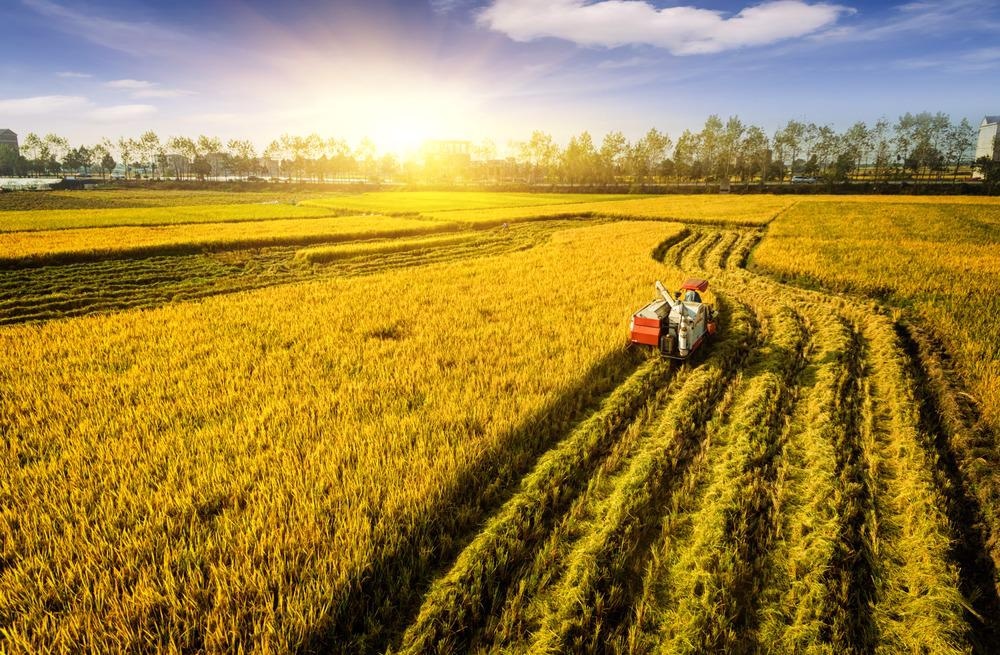AZoCleantech speaks to Amanda Cavanagh from the University of Essex about the future of agriculture in a changing climate and how bypassing a photosynthetic glitch could help us to future-proof our food crops.
How did you begin your research into crops in the context of climate change?
Humans are linked to plant biology through agriculture, and climate change will start to have more significant detrimental impacts on crop productivity over the next decade. We talk about needing to feed a 2050 global population of 9 billion people, and one day I did the math and I realized that in 2050 I will be 64. I want to use my time as a researcher to help solve this crisis.
What effect is climate change having on food crops?
A major climate impact on food crops is elevated atmospheric CO2 concentrations, which could theoretically increase the yield of C3 crops such as rice, wheat, and soybeans. However, with rising CO2 comes increased temperature, and 2.5 °C of warming (as current policies are on target for) could eliminate any gain from elevated CO2.
What research methods did you use during your research?
In this work, we asked if our transgenic plants with altered photorespiration (previously published in 2019) would confer thermal tolerance in the field. We grew the plants in controlled experiments in agricultural plots modified to heat the canopy temperature 5 °C above ambient summer growing temperatures. This work was conducted at the University of Illinois/USDA field site SoyFACE, which allows us to test future climate predictions today to determine the impacts we will be facing in the future.
What long-term effects will climate change have on food crops if nothing is done?
The world is now warming at an alarming rate, and we know from global models that each increase in gross temperature degree Celsius can cause 3-7% losses in yield of our four main crops. It is not something we can ignore.

Image Credit: SnvvSnvvSnvv/Shutterstock.com
Can you explain the photosynthetic glitch common to crops?
Photosynthesis uses Rubisco - the most abundant protein in the world - to fix carbon dioxide from the atmosphere to make sugars that fuel plant growth and yield. However, Rubisco has a problem. Over millions of years, photosynthesis has oxygenated the atmosphere, and Rubisco cannot fully distinguish between carbon dioxide and oxygen, and so about 20% of the time, Rubisco grabs oxygen instead, which initiates an energetically costly recycling process inside the leaf called photorespiration. This can impose yield drags of 30-50% across the US.
What were the key results that came out of your team’s study?
As temperatures rise, Rubisco has even more trouble choosing between carbon dioxide and oxygen, causing more photorespiration. We found that engineered plants could maintain higher rates of photosynthesis at warmer temperatures, and when we tested the plants in heated conditions in the field over two growing seasons, we found that engineered plants produced 26% more end-of-season biomass than unaltered control plants. When we compared heated conditions to ambient conditions, we found that engineered plants had 15% less yield loss under higher temperatures than non-engineered plants.
How could your research pave the way for increased food production?
We need to double-crop productivity by 2050 to feed a growing population, and we will have to do that in the face of climate change. Our goal is to build better plants that can take the heat today and in the future to help equip farmers with the technology they need to feed the world. Photorespiration is a problem for most of our main food crops, including wheat, rice, and soybean. We know that Rubisco has even more trouble picking out carbon dioxide from oxygen as it gets hotter, causing more photorespiration. Therefore, strategies like this can lead to plants that are better able to grow under adverse conditions.
Can you tell the readers more about the international research project ‘Realizing Increased Photosynthetic Efficiency (RIPE)’?
Realizing Increased Photosynthetic Efficiency (RIPE) is an international research project that is engineering crops to be more productive by improving photosynthesis, which is the natural process all plants use to convert sunlight into energy and yields. The project was formed in 2012 with an initial investment from the Bill and Melinda Gates Foundation, and is now funded by BMGF, Foundation for Food and Agriculture Research and U.K. Foreign, Commonwealth & Development Office.
By equipping farmers with higher-yielding crops, we can ensure that everyone has enough food to lead a healthy, productive life. The RIPE project and its sponsors are committed to ensuring Global Access and making the project’s technologies available to the farmers who need them the most.
Why was tobacco used as an initial test crop?
Tobacco was used as an initial test crop to ensure that we could test our plants in agricultural fields where solutions are needed. Tobacco is relatively easy to transform, produces a lot of seed, and has a short generation time. This means that we can move from Petri dish to field site much faster than we could if we had started in a food crop such as soybean or wheat.
How could this research fuel a more positive future in terms of crop production? What further research is needed?
Don Ort (in a previous press release) has a quote about this that really resonates with me:
We could feed up to 200 million additional people with the calories lost to photorespiration in the Midwestern U.S. each year. Reclaiming even a portion of these calories across the world would go a long way to meeting the 21st Century’s rapidly expanding food demands—driven by population growth and more affluent high-calorie diets.
Principal investigator Donald Ort, the Robert Emerson Professor of Plant Science and Crop Sciences at Illinois’ Carl R. Woese Institute for Genomic Biology
Now that we have demonstrated for a second time that this pathway confers a growth benefit for tobacco in agricultural conditions, and have demonstrated it also confers a thermal protective benefit, we are interested in the impact it will have on food crops. Engineering strategies such as this will undergo testing in food crops to demonstrate a benefit, and then be subject to regulatory testing before they end up on our plate. But to have agricultural solutions in 2050, when we will have 2 billion more people to feed in a warmer and drier world, we need to start now.
Do you have any further research that you are able to discuss?
The main goal for our project is now translating these promising discoveries into important food crops. We are beginning to do this with cowpea, soybean, and potato. Now that we now know that this particular strategy offers thermal tolerance and a yield boost, we can use the knowledge from this discovery to inform our choices of the next test crops.
Where can readers find more information?
https://ripe.illinois.edu
https://onlinelibrary.wiley.com/doi/10.1111/pbi.13750
https://ripe.illinois.edu/press/press-releases/heat-ripe-researchers-show-ability-future-proof-crops-changing-climate
About Amanda Cavanagh
 Amanda Cavanagh is a lecturer at the University of Essex, UK, where her group explores leaf and biochemical-level responses to abiotic stress to develop strategies to optimize crop performance in response to the changing climate.
Amanda Cavanagh is a lecturer at the University of Essex, UK, where her group explores leaf and biochemical-level responses to abiotic stress to develop strategies to optimize crop performance in response to the changing climate.
Amanda completed her PhD at the University of New Brunswick in Canada, where she worked on Rubisco - the enzyme that feeds the world.
During her postdoc at the University of Illinois at Urbana-Champaign in the US, she tested synthetic biology pathways that improve photosynthetic performance in crops under field and environmental stress conditions.
Her work has been published in Proceedings of the National Academy of Sciences, Plant Biotechnology, and Science, among others.
Disclaimer: The views expressed here are those of the interviewee and do not necessarily represent the views of AZoM.com Limited (T/A) AZoNetwork, the owner and operator of this website. This disclaimer forms part of the Terms and Conditions of use of this website.